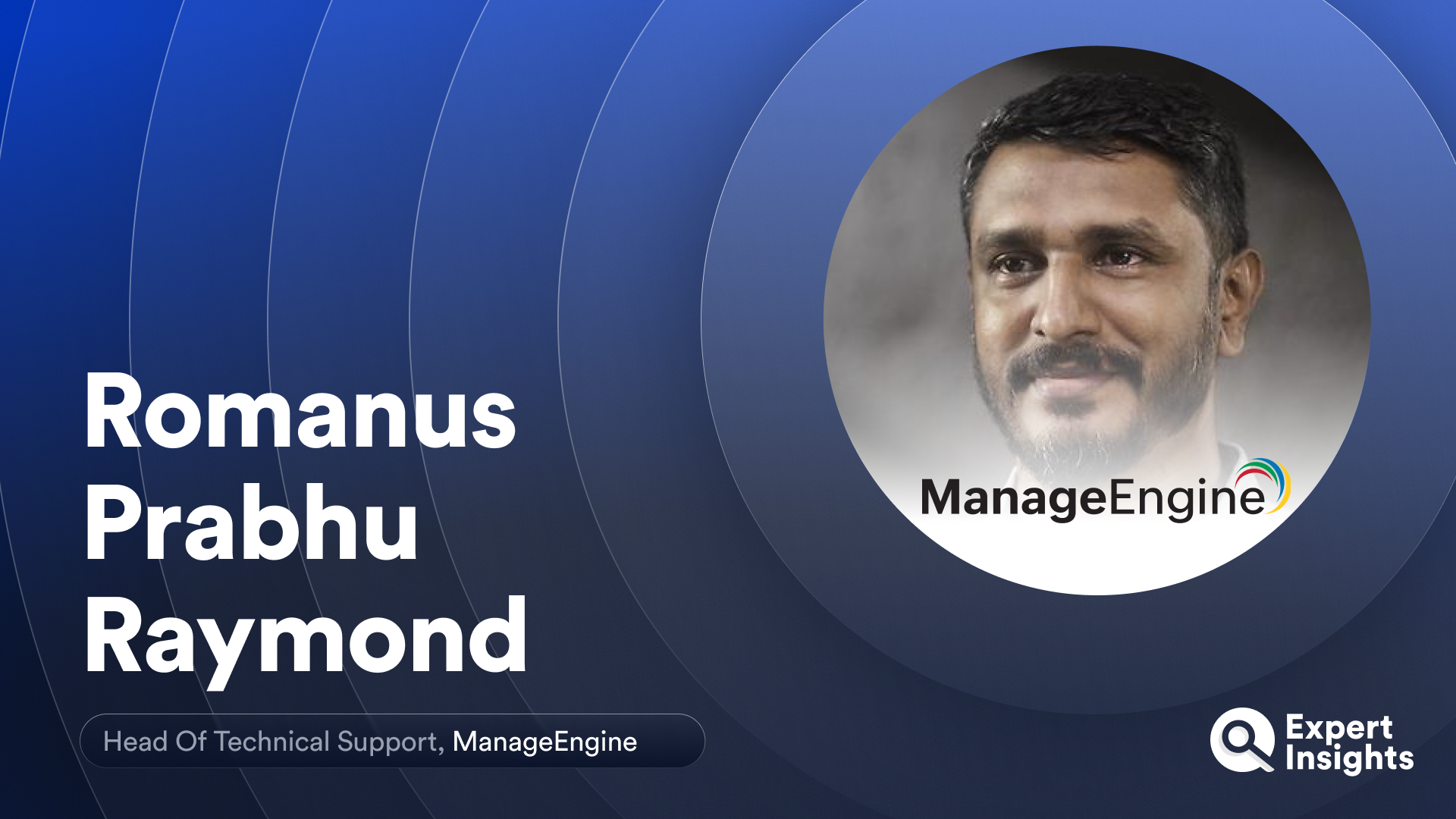
ManageEngine’s Head Of Technical Support On The Future Of Endpoint Management
Expert Insights interviews Romanus Prabhu Raymond, Global Head of Technical Support at ManageEngine.

Many organizations currently approach endpoint management in a way that’s inefficient and doesn’t provide them with the visibility they need, Romanus Prabhu Raymond, Global Head of Technical Support at ManageEngine, tells Expert Insights. But the future of endpoint management is unified, streamlined, and fully integrated with security.
We caught up with Romanus on this month’s episode of the Expert Insights Podcast. Read on for the highlights, and you can listen to the full episode here:
The Big Picture: In recent years, remote work and BYOD policies have become more popular, meaning that organizations have diverse device fleets comprising desktops, smartphones, tablets, and IoT and OT devices, all of which are spread out across multiple locations. While this increases flexibility and productivity, it makes it difficult for IT teams to keep track of and secure the devices connected to their network.
Unified Endpoint Management (UEM) platforms, as the name suggests, were designed to consolidate the capabilities of disparate, legacy endpoint management solutions to make it easier for IT teams to manage diverse device fleets.
- “After the pandemic, […] remote work increased the attack surface. Similarly, when you bring your own device and use it for official purposes, there is no differentiation between official and personal data. The same device is used for booking tickets, doing banking transactions, and doing work. The boundaries have diminished.”
- “Because of this, the data residing in the endpoint, traveling to the cloud, coming back to the endpoint, and residing in the cloud, should be encrypted or secured.”
- “But because these endpoints are spread out, you have less visibility.”
- “UEM gives a consolidated way of managing things, and it has enhanced security.”
Driving The Issue: As IT managers and CISOs become increasingly overburdened, the endpoint space needs to undergo yet another evolution to support them: integrating the two key aspects of management and security.
Where Is Endpoint Management Headed? Although endpoint management has come a long way already, we can expect two more key evolutions in the space in the near future, says Romanus. The first of these is the convergence of UEM and UES.
- “[Most organizations have] an IT operations team and a security operations team. When an incident happens—not necessarily a successful attack or a leak of data, but an attempt through the vulnerability—, once it’s detected, at some point, your security operations team needs the help of the IT operations team. Similarly, in order to maintain a security posture for the organization, the IT operations team needs the help of security operations.
- “Converging UEM and UES enables these two teams to seamlessly exchange data and secure your business. It ensures your organizational teams for operations and for security can use the same product and exchange information efficiently.”
The second evolution is that the endpoint space will utilize AI to prioritize issues more accurately, helping to reduce the strain on overburdened teams.
- “Take the example of patching. Today, we have patching based on the severity of the patch; if the vendor says that it’s critical, then we have to prioritize it. But if you go to any enterprise, they want to do it based on the risk.Risk means you also have to [consider] the exposure level of the endpoint. If I’m traveling outside constantly, then [the risk of] my endpoint getting compromised is more than the person who’s sitting inside the organization with the same vulnerability.”
- “AI [can help] in terms of prioritization [by combining information on] what endpoints are vulnerable because of the exposure, and what patches are severe according to the vendor. [This is a] more meaningful way of securing endpoints.”
Final Advice: Romanus’ advice for IT and security teams struggling to secure a diverse device fleet is three-fold.
- “How will you protect your business when you are not aware of what assets are in your business? So that’s the first step. Know your assets. What are your assets? Where are your assets? And what are the vulnerabilities in those assets?”
- “The second step is creating a strategy according to your org level policies. It could be NIST-recommended, CSF, or simply directly picking up CIS controls or top 10 controls.”
- “The final step is aligning a UEM tool with modules that can cover all of those requirements according to the strategy. And when picking the tools, ensure it is […] extendable enough to integrate with your existing tools so you get the most benefit out of it.”
Expert Insights provides leading research, reviews, and interviews to help organizations make the right IT purchasing decisions with confidence.
For more interviews with industry experts, visit our podcast page here.
To learn more about UEM, read our Buyers’ Guide here.



